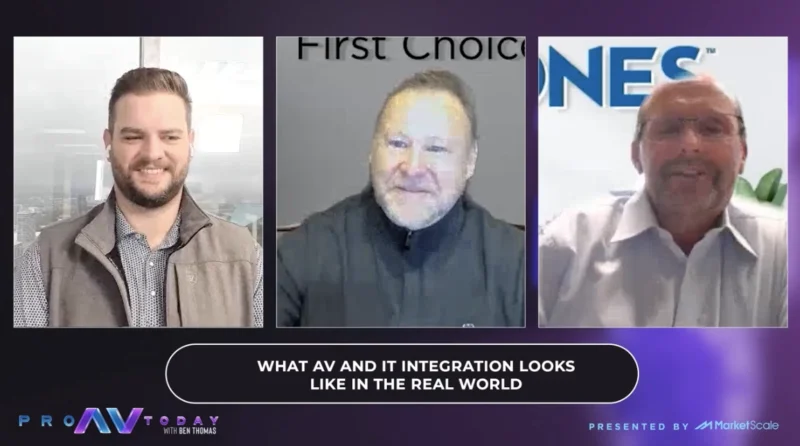A Brief History of Video Conferencing, and Why it Matters with AVTEQ and TOTAL Marketing, LLC.
Video conferencing started as a sci-fi dream on the Jetsons. Now it’s the sought-after communication method for any company with an active global presence, a flexible workforce, or a virtual command center. How video conferencing technology grows from day to day is astounding, but perhaps more interesting is how far it’s come up until now.
On today’s podcast, we’re rejoined by Aaron Rubner, president of AVTEQ, and MarketScale first-timer Ron DeVoe, founder of TOTAL Marketing, LLC., to dive into that rich history. Rubner introduced us to DeVoe, and what a find he was for thought leadership; with more than 40 years of experience in AV sales, DeVoe’s career has developed alongside the growth of video conferencing, and each of the most critical points of transition for the industry can still be felt today.
“In the early 90s…per-site it cost them $75,000 for the equipment and it would give them possibly six to ten frames a second,” DeVoe said. Clearly, video conferencing doesn’t even come close to that price point. DeVoe said computers were one of the main reasons for the eventual decline in cost of video conferencing technology, which have become as equally powerful and accessible.
On the podcast, DeVoe and Rubner explain how artificial intelligence, more powerful networks and integratabtle solutions are paving the way for the future of video conferencing, though at the same time, never forget the basics. “Video is great and all, but the audio’s got to work every time,” Rubner said.
“We’re standards based in the video conferencing world to begin with; we’re constantly staying to that standard but improving on that standard,” DeVoe said.
For the latest news, videos, and podcasts in the Pro AV Industry, be sure to subscribe to our industry publication. A new episode of the Pro AV Show drops every Thursday.
Follow us on social media for the latest updates in B2B!
Twitter – @ProAVMKSL
Facebook – facebook.com/marketscale
LinkedIn – linkedin.com/company/marketscale








